More recently, there were few variations in the design of the window opening. And the problem of choosing curtains was not so acute. Today, a wide variety of options are available that will help transform even the most ordinary room.
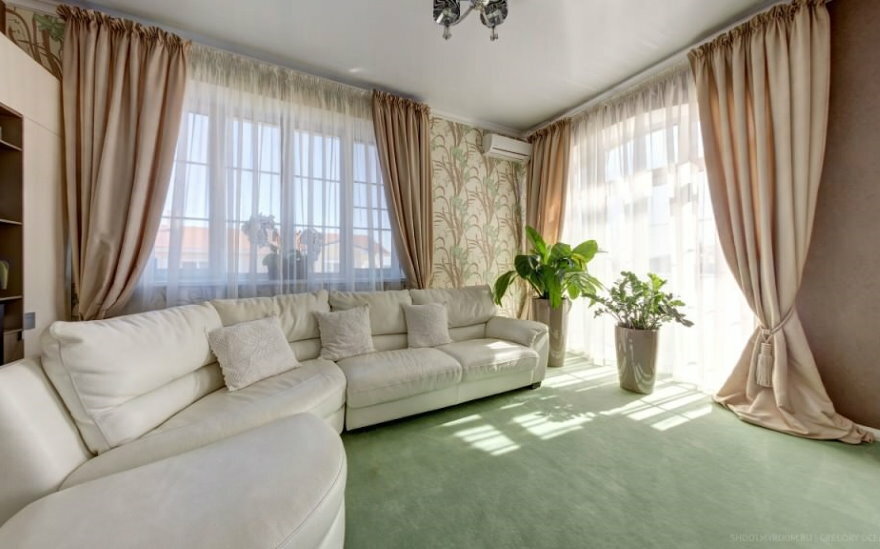
Replacing the curtains on the windows, you can change the appearance of the room beyond recognition.
How to choose the right curtains
Content
- How to choose the right curtains
- Window design options
- French curtains
- Roman curtains
- Classic curtains
- London curtains
- Italian curtains
- Video: The main types of modern curtains
- Beautiful curtains in the interior - 50 photos
So, it is quite obvious that all kinds of curtains, curtains and curtains are not independent elements. They are designed to complement and enhance the overall design concept of the interior. And they are chosen depending on the style of furnishings and furniture.
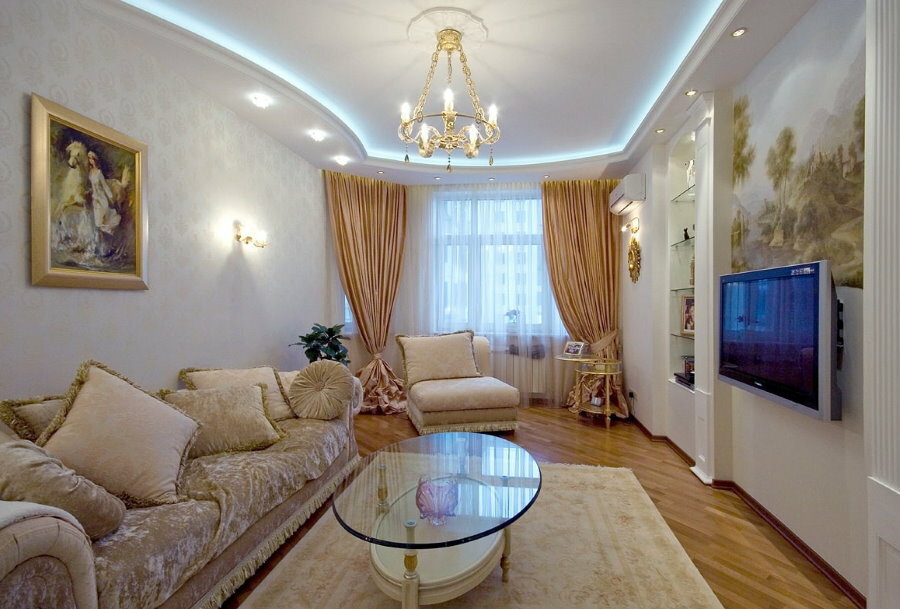
Classic-style curtains consist of light tulle and heavy thick fabric curtains
So, for example, a luxurious classic interior presupposes the presence of voluminous draperies, decorative elements and glitter. Modern stylistic trends, on the contrary, are harmoniously complemented by laconic curtain models. Well, the country style cannot be imagined without cute decorative elements, rustic flowers and natural materials.
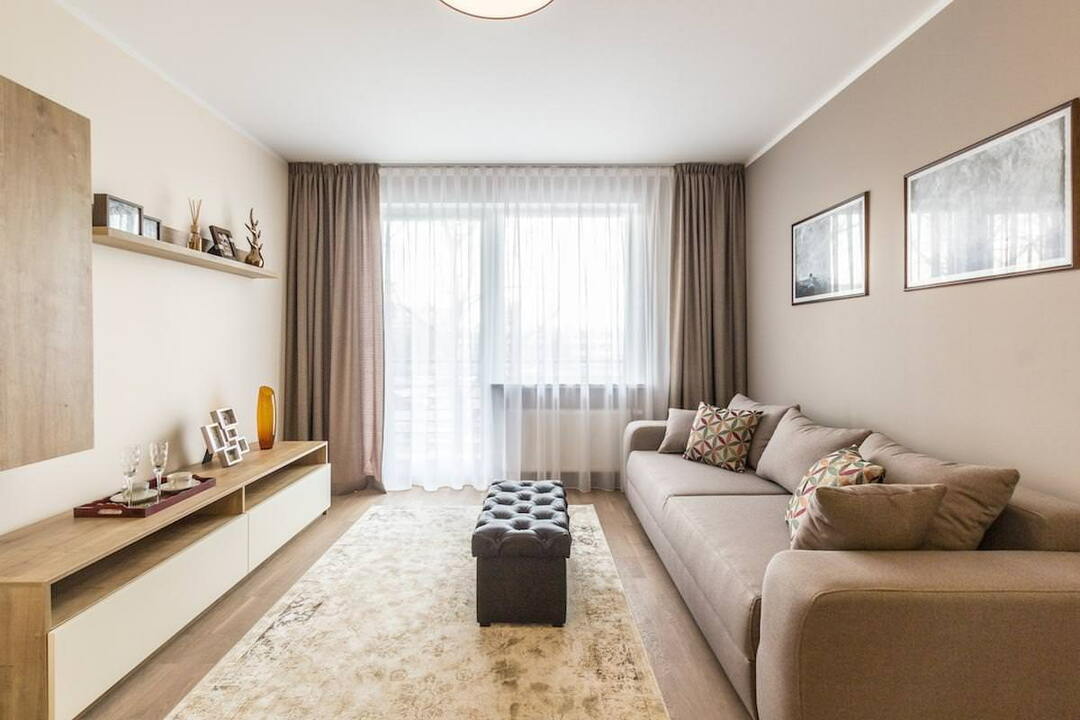
In modern interior styles, straight curtains are used on simple eaves.
The shape of the curtains, regardless of the style of the interior, is also allowed in different ways. For example, in some rooms floor-length curtains are the best solution. And in other small rooms, it is recommended to use short curtains to visually expand the space.
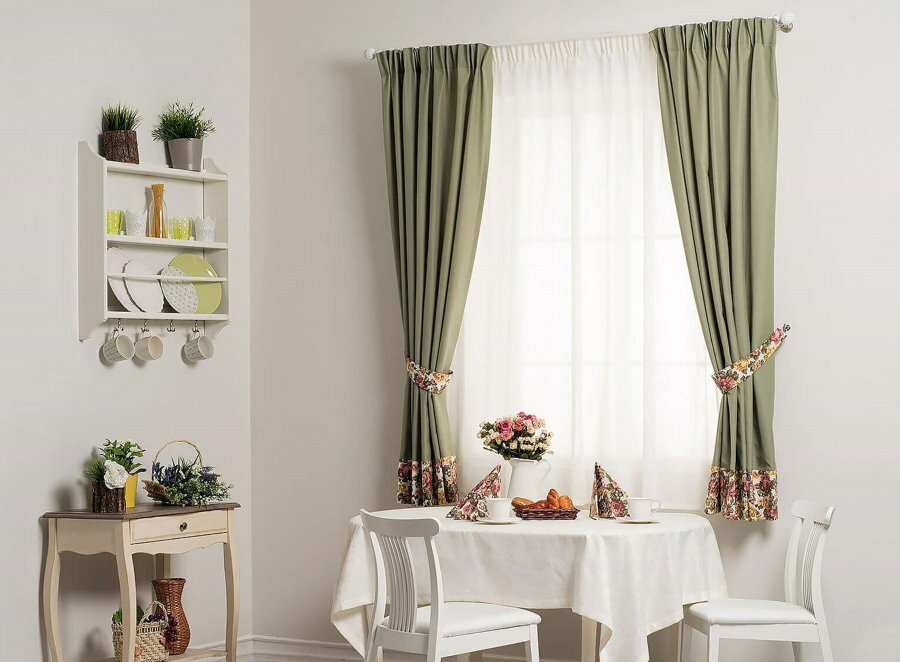
Short curtains look stylish, often used in the kitchen
Also, asymmetric curtains are suitable for correcting a room, when one canvas is wider and the other narrower (or, one curtain is long and the other is short). As a rule, such options are used in attic rooms with non-standard windows and balconies.
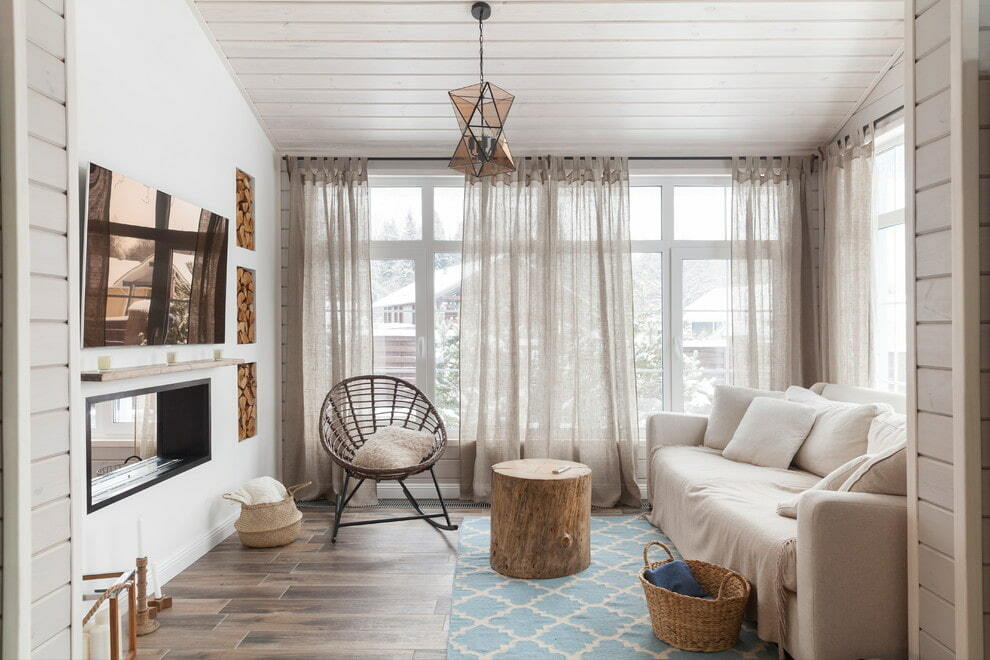
Long curtains hide well the flaws of the window, visually raise the ceiling and expand the space
Finally, to add a special chic to the room, multi-layer models are used. They best emphasize the luxury and elegance of the classic style. And for more laconic interiors, roll curtains or Japanese panels are suitable.
Window design options
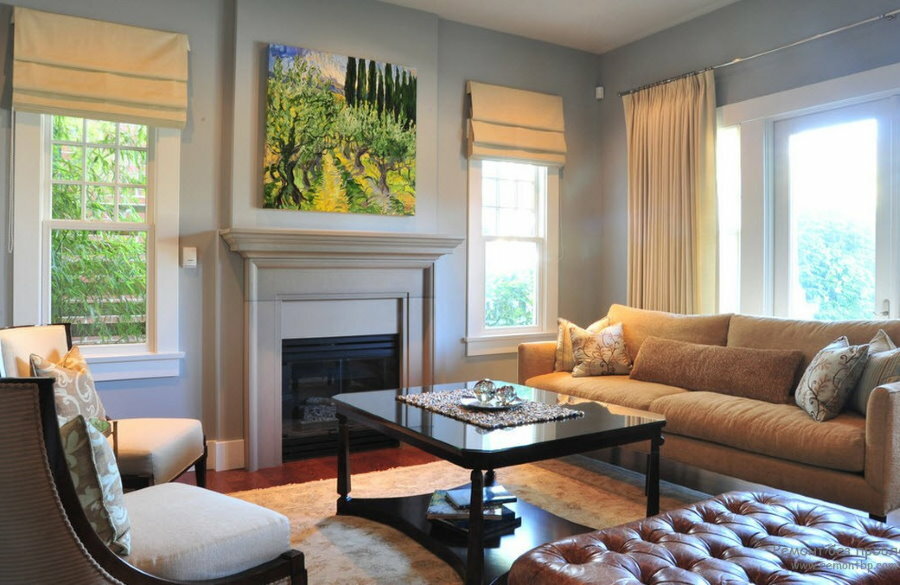
Different types of curtains can be used in one room, making the interior more attractive and original.
French curtains
Contrary to popular belief, window decoration with the help of such curtains will complement both modern and classic interiors.
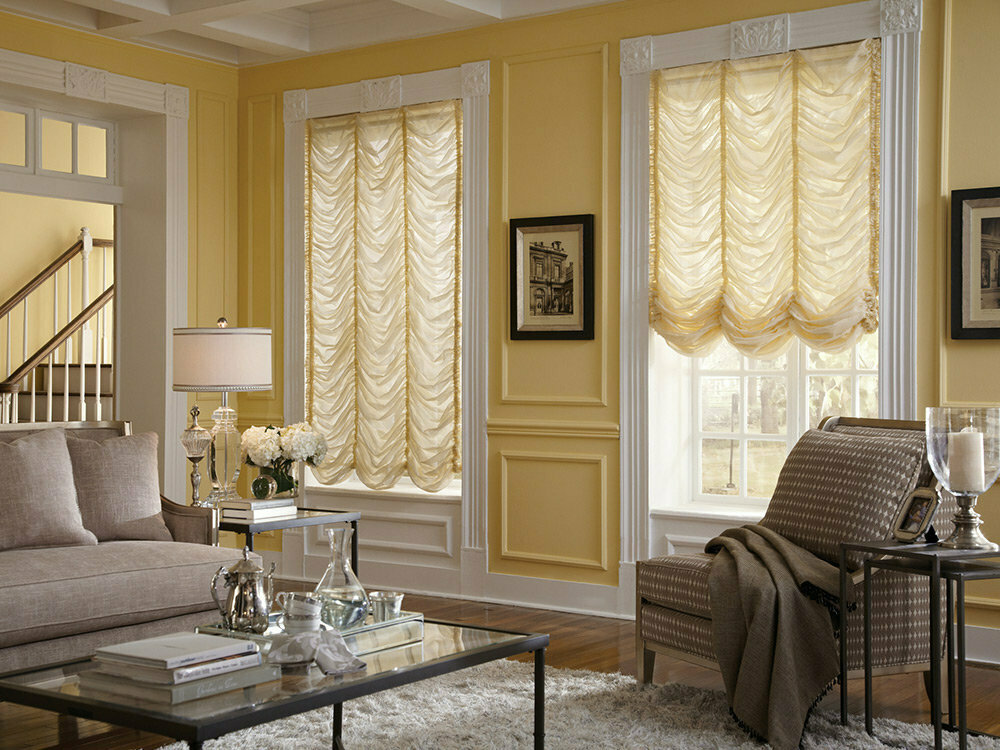
French curtains consist of a single canvas, divided into several sections with a huge number of folds
Externally, the French curtain is a canvas with horizontal folds. Due to this, the window decoration becomes voluminous and luxurious. A feature of this type of curtains is their impressive weight, because in order to obtain the desired drapery, fabric is required twice as much as for simple curtains.
Another nuance that distinguishes curtains of this type is the complexity of care. Dust accumulates in the folds of the fabric and can be difficult to remove. Finally, even washing and drying fabrics requires, if not special equipment, then certainly certain skills.
The design of French curtains is stationary and folding:
- Stationary models do not imply the ability to move or raise the canvas. As a rule, such designs are used for large living rooms where there is no need to adjust the degree of illumination, or in kitchens. In this case, the length of the canvas is chosen different: for living rooms - to the floor, and for the kitchen space - to the windowsill.

A stationary French curtain is not equipped with a lifting mechanism and usually acts as a tulle
- The folding design allows you to raise and lower the canvas, adjusting the amount of light entering the room. Usually, regulation is carried out through a special mechanism, which greatly simplifies the process of using such curtains. This model is relevant for the bedroom, since during the day the window space is open and the light freely penetrates, and at night the curtain tightly closes the window opening, providing ideal conditions for recreation.
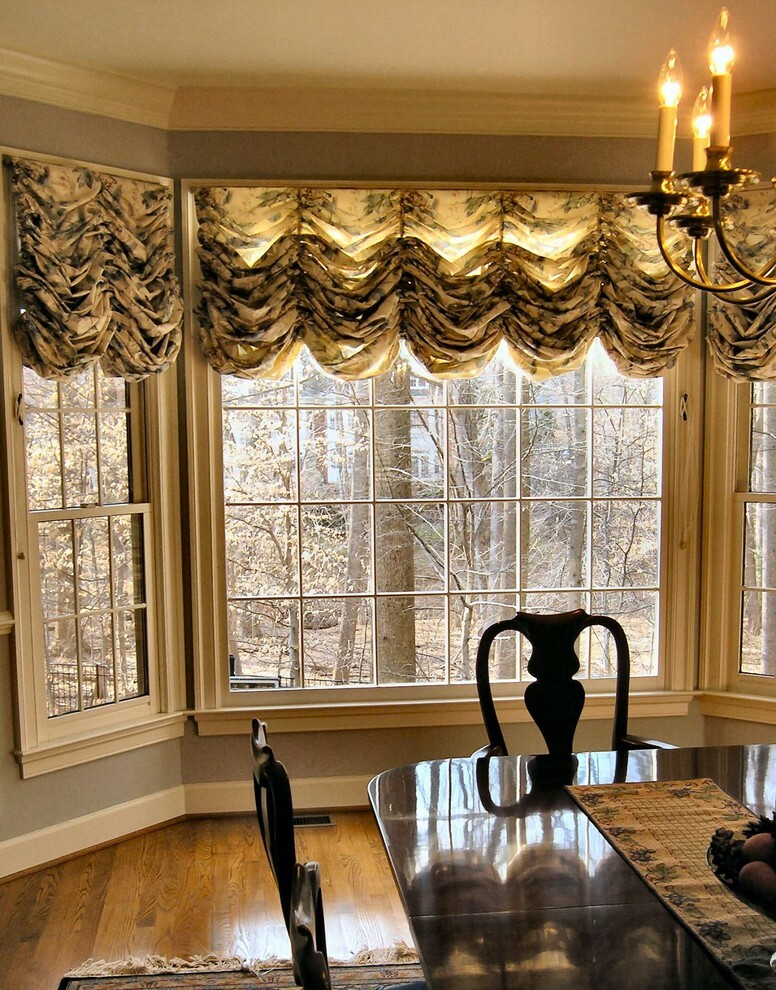
On a French curtain with a lifting mechanism, you can adjust the length of the fabric and the number of folds
Today, this model of curtains is made from both expensive natural fabrics and budget synthetic fabrics. Organza, silk, cotton, as well as wool and velvet are often used.
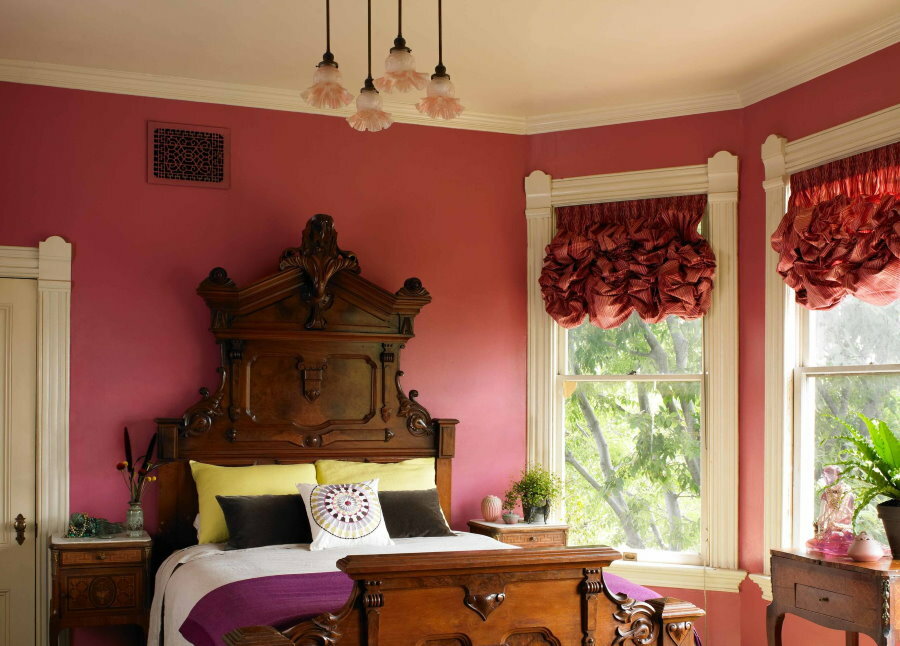
To create volume and graceful folds, fabrics are used that lend themselves well to drapery.
When choosing a color palette, they usually stop at pastel shades. The design of French curtains allows the use of lambrequins. They are made from the same fabric as the main canvas, or from a contrasting material, but also in a pastel shade.
Roman curtains
According to one version, we owe the appearance of these curtains to the Romans. It was they who came up with such a non-standard, but very practical and beautiful way of decorating window (or door) openings.
It is not known how ancient this version of curtains is, but it is obvious that it is very comfortable. Such "curtains" successfully complement both modern and classic interior design.
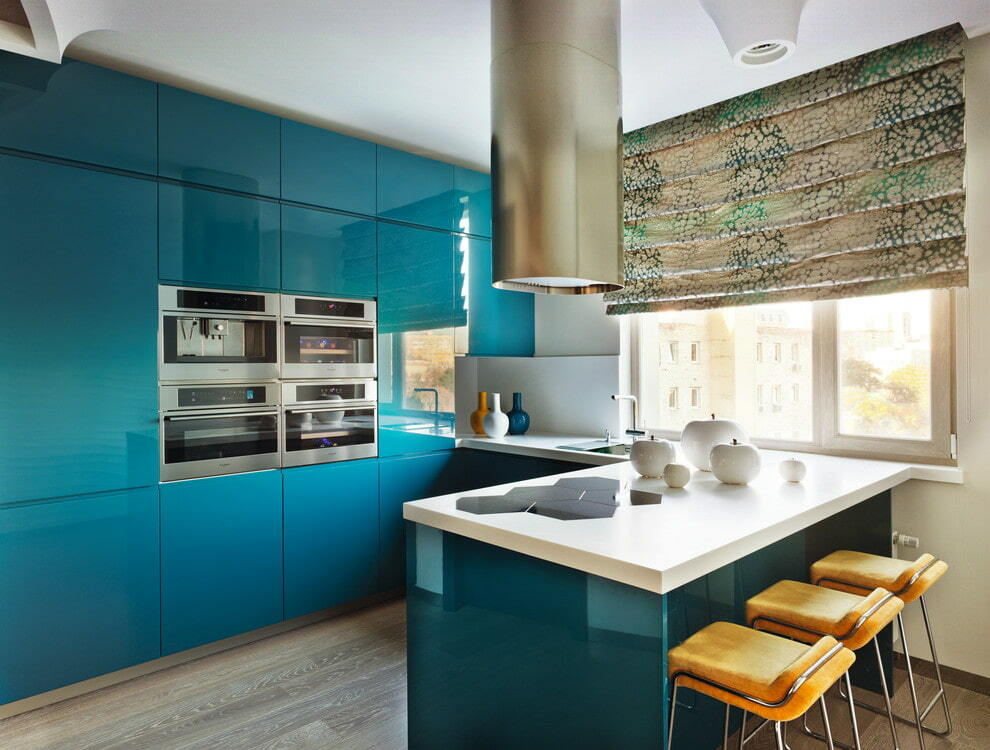
Roman shades look simple, but at the same time very elegant
It only at first glance seems that the design is very complex, in fact, Roman blinds consist of a rectangular cloths of fabric, strips for fixing folds, weights so that the canvas always looks even and lifting mechanism.
Modern designers offer models with an electric remote control, which allow you to adjust the degree of illumination of the room without getting up from the sofa.
By the way, the material from which such curtains are made is also different: from the usual cotton cloths to bamboo straws.
There are several design options: classic, frameless and cascading:
- Classic. The most commonly used option. In the "free" state, the curtain is a smooth canvas. When it is assembled, uniform folds.

Classic models blend perfectly with any interior design
- Frameless. There are no horizontal strips in this design, so when the curtain rises, a smooth wave is formed.
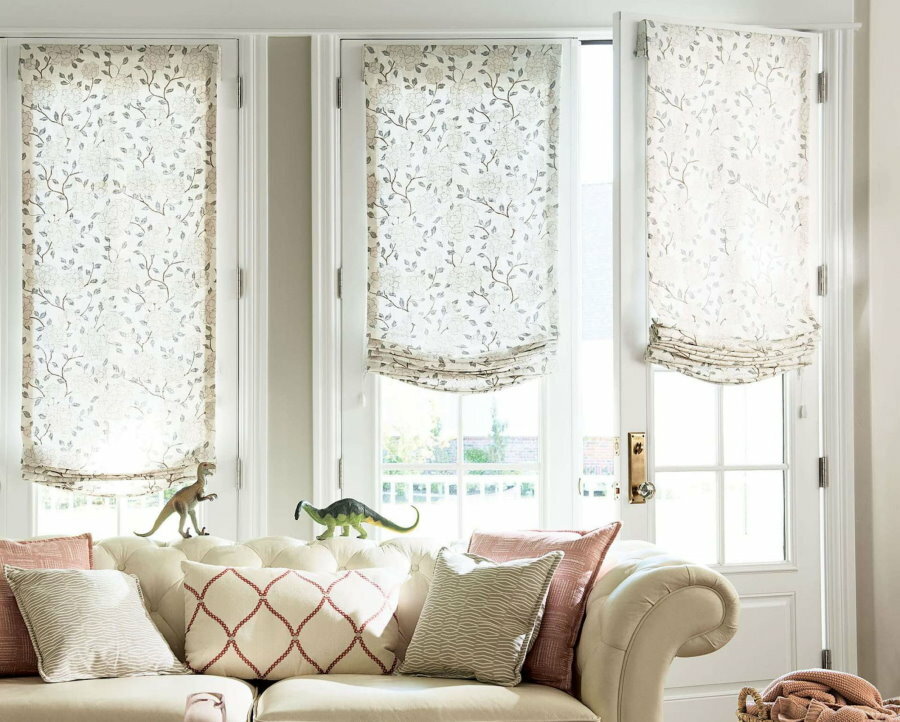
Frameless models in the lowered state represent a flat canvas
- Cascading. They differ from the classic ones in that even in the unfolded state, there are folds on the canvas, fixed with a thick tape.
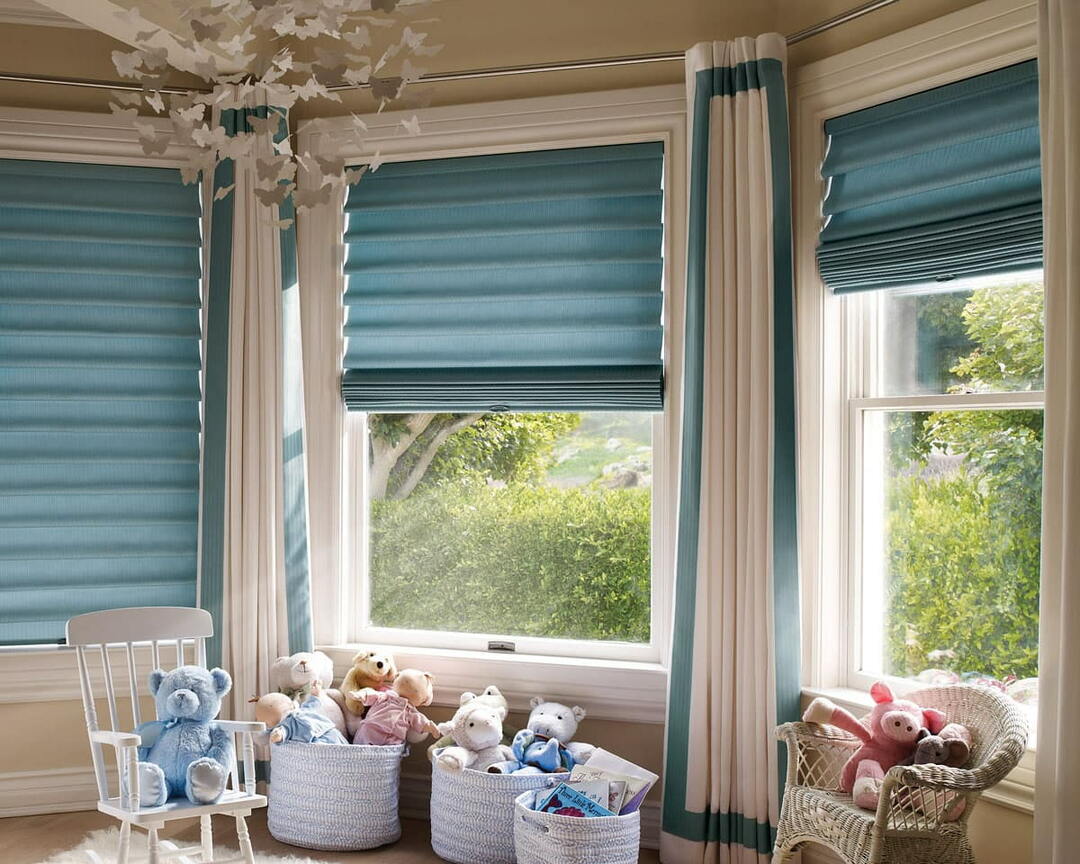
Cascading models retain drape even when unfolded
It is worth noting that Roman shades allow for some variations. For example, the fringe attached to the bottom edge brings an oriental atmosphere to the interior. And if the bottom edge is not left even, but a curly addition is sewn to it, then the look is more creative. Finally, in rooms with low ceilings, curtains with vertical stripes are used to visually increase the height of the room.
The double-layer construction of Roman day-night canvases is often used to provide maximum protection from light on the sunny side. Finally, it is Roman blinds that will adequately decorate window openings in the bay window, provided that a separate canvas is used on each window - it turns out creatively and functionally.
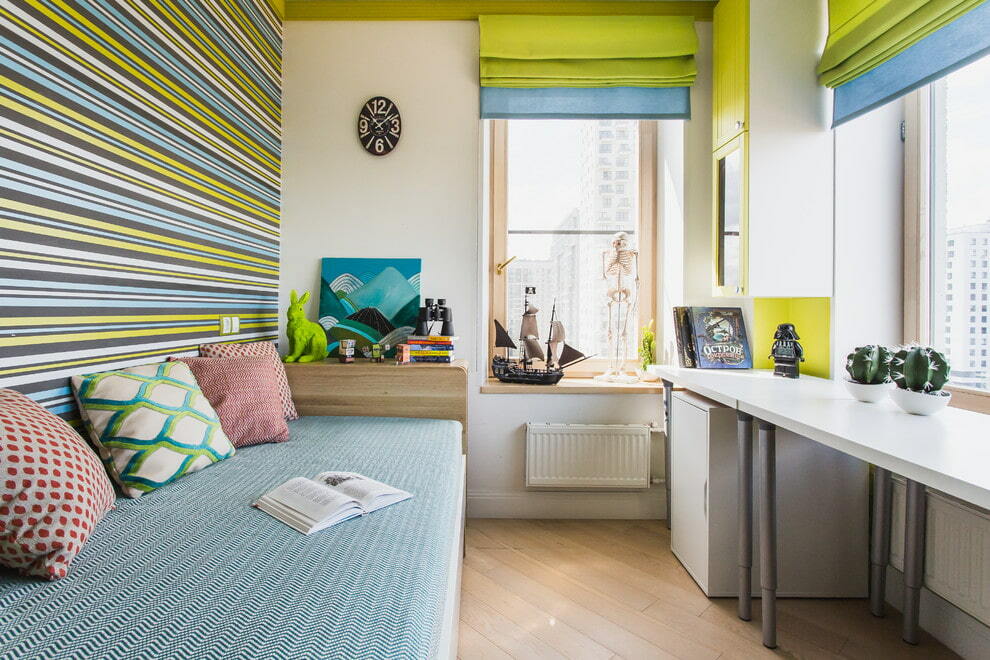
In the photo there are double Roman curtains made of fabrics of different density. A thick fabric provides protection from the sun, and a lighter one serves as a decor for a window opening
Unsurpassed versatility is considered to be the indisputable advantages of "Romeo" - they are used in the interior of any style. The availability of a variety of colors and designs, as well as the versatility of attaching the canvases - can be mounted on the wall above the window, or can be attached to the window itself.
The disadvantages of this type of curtain include the ability to use the window only when the curtain is raised. The exception is curtains attached directly to the glass. Also, when using the mechanism, it is not always possible to achieve even folds, you have to straighten the canvas with your hands. However, these disadvantages are quite negligible compared to the advantages. This is probably why roman blinds are so relevant.
Classic curtains
Perhaps no modern trends can replace classic curtains. They will always be in demand among lovers of elegance and impeccable style. Moreover, the models of such curtains are very diverse.

In the photo, an example of decorating a bedroom window with classic curtains with a lambrequin and grabs
Features of the design of a window opening in a classic style:
- Length. The curtains are selected to the floor or do not touch it slightly.
- Most often, a set of light curtains and textured curtains is chosen. Light tulle, organza or chiffon are most often chosen for curtains, and taffeta, velvet or satin for curtains.
- The design assumes the presence of volumetric drapery in the upper part and light uniform folds along the entire length.
- Classics are impossible without additional decorative elements: lambrequins or grabs. At the same time, a well-chosen decor does not look too pompous, but on the contrary is in harmony with the main structure.
Classic curtains perfectly "get along" in a modern high-tech style and in luxurious provence. In the case of modern stylistic trends, a plain laconic fabric is ideal. An elegant design will be out of competition if curtains with massive grabs and tassels were used to decorate the window opening.
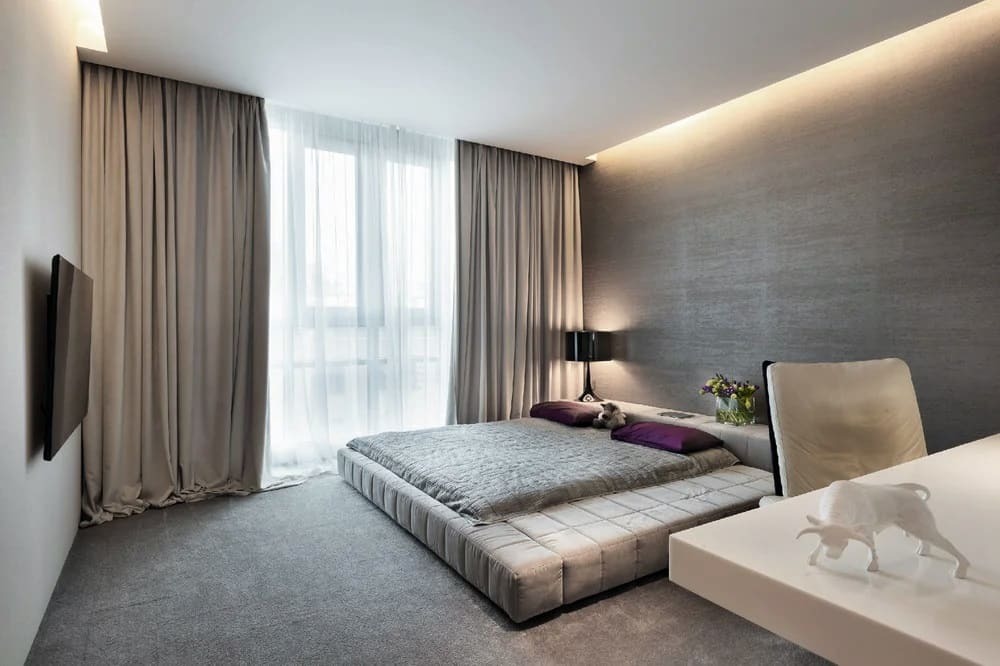
The photo shows an example of decorating a bedroom window in a minimalist style with straight curtains
Depending on the purpose of the rooms, the design of the curtains is also chosen. So the curtains for the bedroom should not only be beautiful, but also protect from excess light and prying eyes. This means that the most functional model is chosen - light tulle and two curtains on the sides. If necessary, the window can be closed with a “light movement of the hand” and opened as well. The main thing is that the window decoration should be liked by the hostess (owner) of the room and not annoyed, but create a cozy atmosphere.
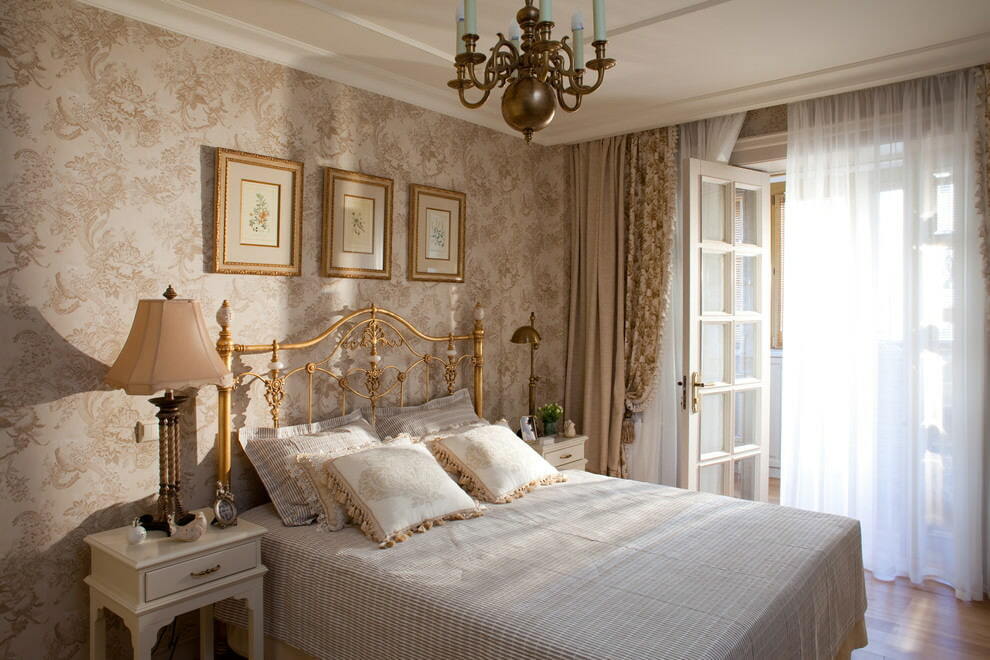
In the photo there is a bedroom, where the curtains are fixed on a cornice hidden in a niche, which makes the window visually larger
Such curtains in the living room are designed to complement the overall design concept and harmonize as much as possible with the decor and decoration of the room. This means that if your living room is furnished with exclusive luxurious furniture, then the curtains should not "lag behind." At the same time, the design itself can be quite laconic: tulle, two curtains, a small lambrequin, and the effect of luxury can be achieved through a beautiful fabric.
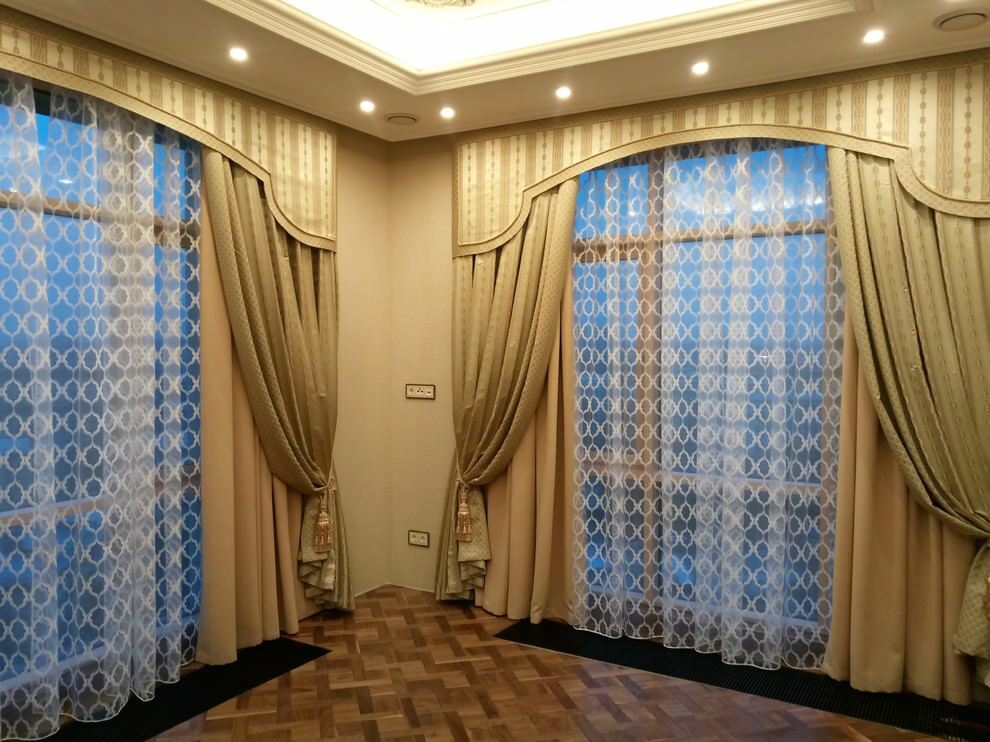
In the photo, an option for decorating the living room with classic curtains with a hard lambrequin, inside which a cornice is hidden
For the kitchen, the classic is not often chosen, but in the case when the room is large enough and access to the window is free, why not resort to an elegant classic style. In such a situation, asymmetric structures are more often used for greater functionality of the room.
An important nuance: you should carefully consider the choice of fabric, since in the kitchen the linens will absorb odors. Today fabrics are available with special impregnation against dust, odors and moisture.
London curtains
To feel like an aristocrat and fill the room with a special spirit of romanticism, decorate the window with London curtains. This option "takes root" best in spacious rooms. A characteristic feature of this window design is a deep wave in the middle and bow folds on the sides. The width of the structure is varied, so that you can not only arrange a small kitchen window, but also decorate a large window space in the living room.
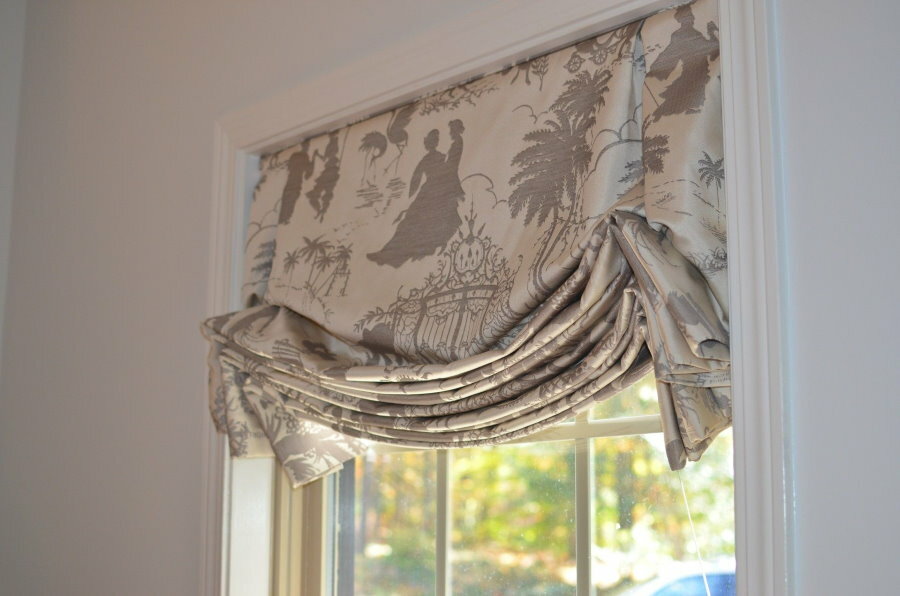
London curtain looks beautiful and expensive, both raised and lowered
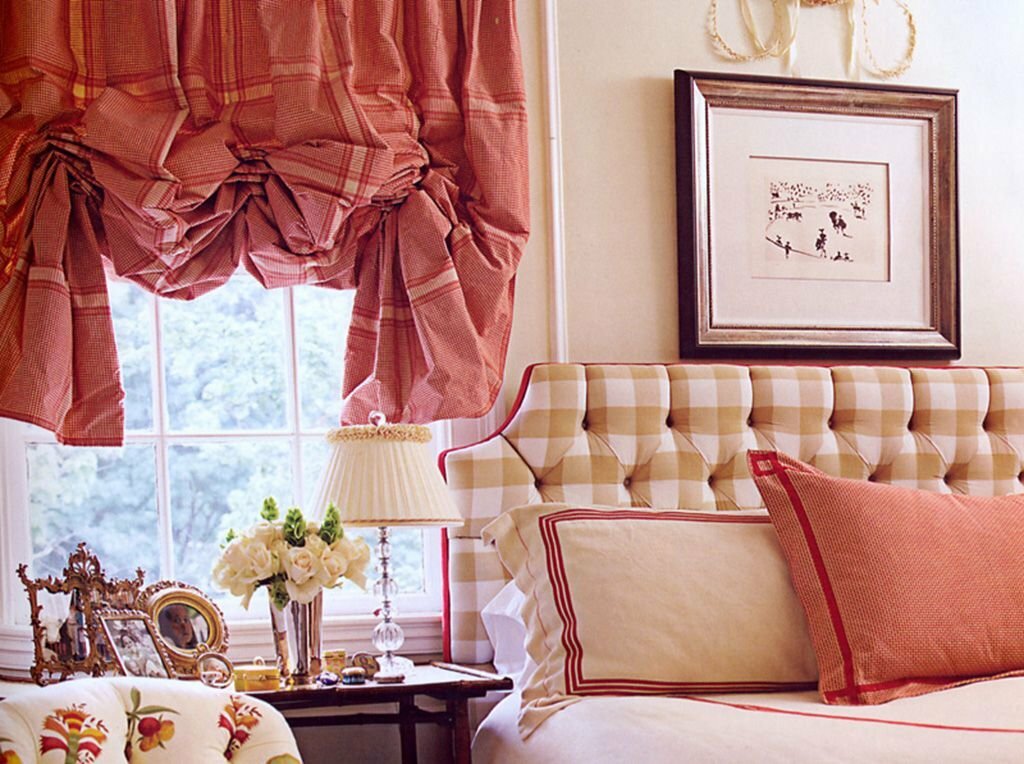
Such curtains are rarely kept in a straight position - lush poufs look very attractive
A real highlight will be the addition of such curtains with fringe, lace or braid. Sewn to the bottom edge, these decorative elements add a complete look and grace to the entire structure.
Italian curtains
Unlike London curtains, folds on Italian curtains are located at the top of the canvases. This drapery is obtained thanks to a special tape that is attached to the top edge. Folds of various shapes are allowed, and it is thanks to them that the unusual design of the window opening is emphasized. The symmetry characteristic of Italian canvases is formed with the help of special rails of the lifting mechanism.
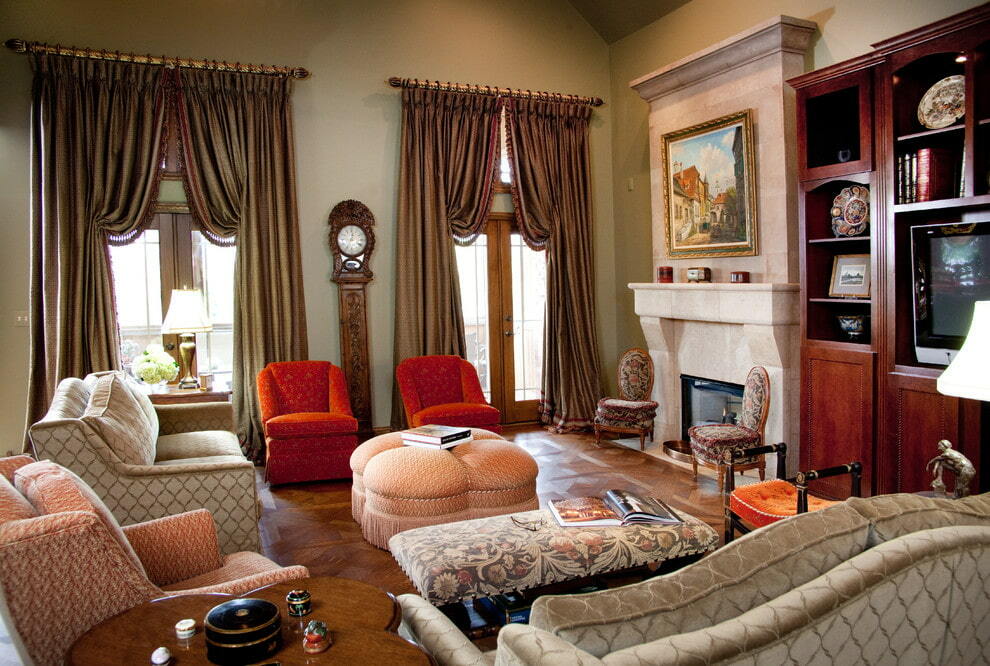
Italian curtains are considered aristocratic and very sophisticated decor.
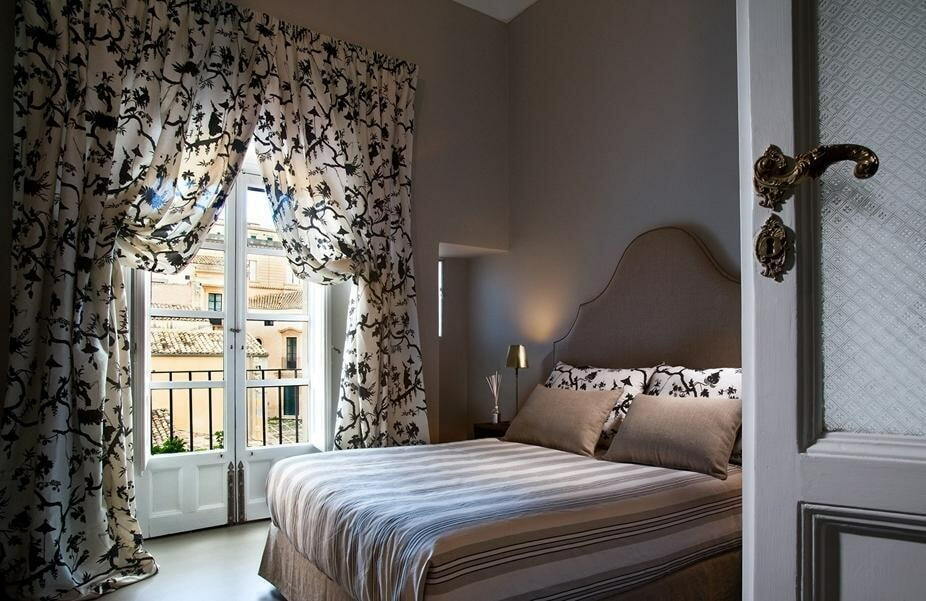
Thanks to their elegance and noble appearance, such curtains can fit into almost any interior.
In addition, a distinctive feature of this type of curtain is the system of lifting the canvases. Since the curtains themselves are located diagonally, a voluminous drapery is obtained through the use of this mechanism. Such curtains are perfectly complemented by a solid lambrequin.
Italian curtains are attached both to the ceiling and to the wall. But nevertheless, the most often used option is considered to be fastening to the wall above the window opening.
Initially, fabrics of deep colors were used for Italian curtains: burgundy, blue, brown or green. And today this type of curtain allows the use of both plain fabrics and curtains with a pattern. The main thing is an unusual design.

Stationary Italian curtains assume incomplete opening of the window and always remain in a motionless state
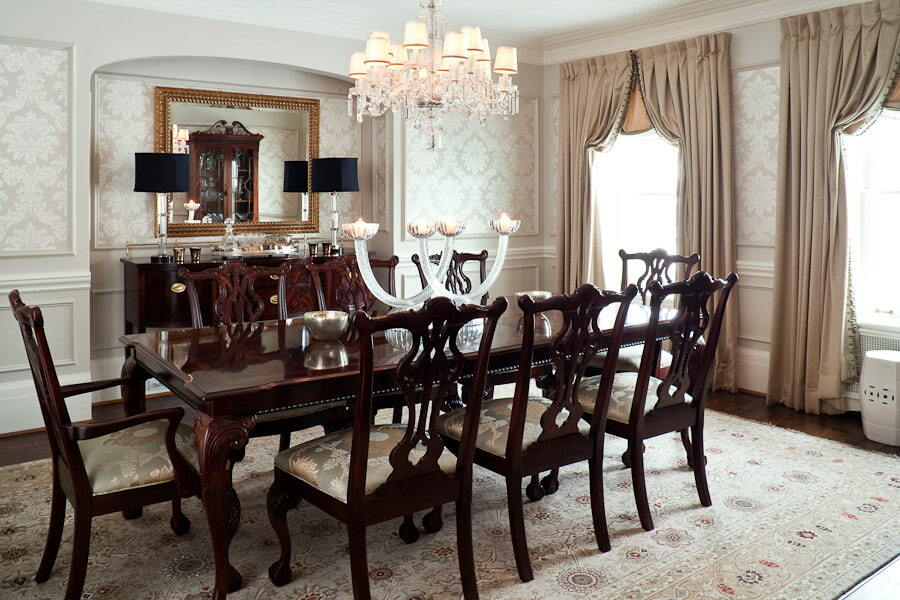
Sliding canvases are gathered into folds using harnesses or a rack device
The curtains in the room exist not only to create coziness and comfort. They are designed to demonstrate the impeccable taste of the hostess. This means that you should carefully consider the choice of the most suitable model. Moreover, the variety of existing options and designs allows you to do this.



